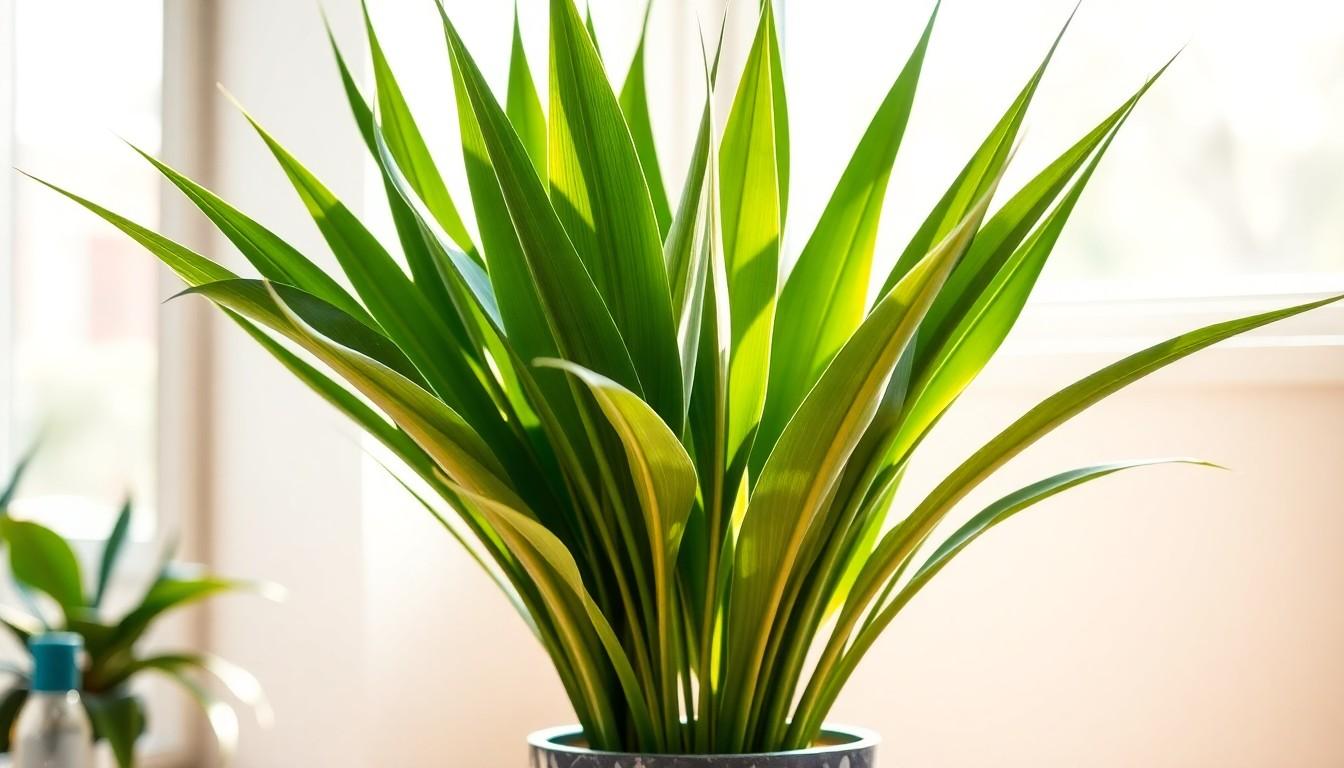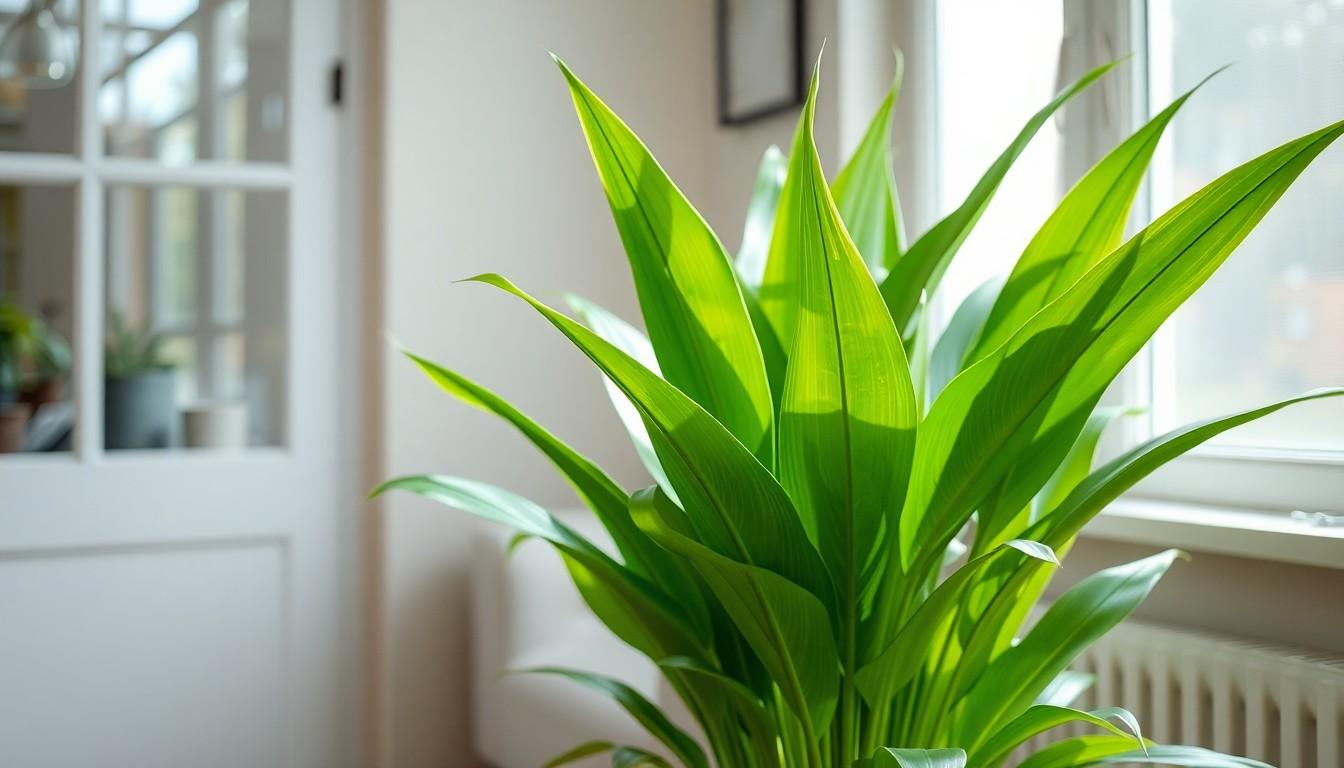Physical Address
304 North Cardinal St.
Dorchester Center, MA 02124
Physical Address
304 North Cardinal St.
Dorchester Center, MA 02124

The African spear plant, with its striking spear-like leaves and low-maintenance charm, is the perfect addition to any home. If you’re looking to add a touch of the exotic without the hassle of high-maintenance greenery, this plant’s got your back. It thrives on neglect, making it the ultimate plant for those who might forget to water their housemates—err, houseplants.
The African spear plant, known scientifically as Sansevieria cylindrica, features striking spear-like leaves that stand upright, creating a bold visual statement. These leaves can grow up to 3 feet tall, making the plant a striking addition to both indoor and outdoor spaces. Known for its resilience, the plant thrives in diverse environments, from low light to bright indirect sunlight.
It requires minimal water, thriving in well-draining soil. Overwatering poses the greatest risk, resulting in root rot. Providing water every few weeks during the growing season ensures the plant stays healthy, while reducing frequency during dormancy in winter months aids in maintaining its vigor.
Maintaining the African spear plant is simple. It’s tolerant of various humidity levels and adapts well to the average household climate. Fertilizing won’t be necessary, but applying a balanced houseplant fertilizer during the growing season can encourage healthy growth. This low-maintenance nature appeals to busy individuals and novice gardeners.
Repotting the plant every few years promotes robust growth. This procedure can coincide with the plant’s strong growth phases in spring or early summer. Propagation occurs through offsets or dividing the rhizomes, allowing plant enthusiasts to expand their collection easily.
Pests are generally not an issue, although occasional infestations of spider mites or mealybugs might occur. Regular inspection and an application of insecticidal soap will effectively manage any outbreaks, ensuring the plant remains pest-free. Overall, the African spear plant offers an excellent option for those seeking a striking yet easy-to-care-for houseplant.

African spear plants thrive in a variety of conditions, making them adaptable choices for diverse environments.
Bright indirect light is ideal for African spear plants. It can tolerate low-light areas but grows best with access to more light. Too much direct sunlight can scorch the leaves, so placement near a window with filtered light works well. Indoors, a room with eastern or southern exposure provides ample light. Most importantly, frequent movement to adjust light exposure isn’t needed.
African spear plants prefer temperatures between 70°F and 90°F (21°C to 32°C). They can withstand temperatures down to 50°F (10°C but shouldn’t be exposed to frost. Maintaining warmth contributes to stronger growth and vibrant leaves. When temperatures drop, plants may become dormant. Therefore, keeping these plants within their preferred temperature range ensures healthy growth.
Humidity levels vary, but African spear plants do well in average household humidity. These plants can adapt to both dry and humid environments. They prefer humidity around 40% to 60%, so areas with consistent airflow are beneficial. It’s not necessary to mist the leaves or use a humidifier. Instead, simply ensure good air circulation.
Proper watering and feeding are essential for the African spear plant’s health. Understanding the needs of this resilient plant ensures vibrant growth and longevity.
Watering this plant requires a careful approach. It’s best to allow the soil to dry out completely before the next watering. During the growing season, typically spring and summer, watering every two to three weeks is ideal. In winter, the frequency decreases, with watering every four to six weeks. Signs of underwatering include drooping leaves, while yellowing leaves indicate overwatering. Maintaining a consistent schedule contributes to the plant’s overall well-being.
Fertilizing the African spear plant promotes optimal growth, though it’s not strictly necessary. During the active growing season, applying a balanced houseplant fertilizer once a month supports healthy development. Choosing a fertilizer specifically designed for succulents can enhance results. Diluting the fertilizer to half-strength prevents nutrient burn and ensures the plant absorbs the right amount. Observing for any signs of nutrient deficiency, such as slow growth or pale leaves, helps gauge fertilization needs effectively.
The African spear plant faces a few potential pests and diseases, though infestations remain infrequent. Mealybugs and spider mites rank among the most common pests. These critters can cause leaf damage and stress the plant. Detecting signs early ensures swift intervention. Look for cottony white masses for mealybugs and fine webbing for spider mites. Yellowing leaves may signal an underlying issue.
Identifying pests involves observing the plant’s overall health. Check leaves for unusual discoloration or spots. Mealybugs appear as white, cottony clusters, usually hiding in leaf joints. Spider mites, on the other hand, create tiny webs along the leaf surface. Aphids can also make an appearance, causing leaves to curl. Regular inspections promote early detection, allowing effective management of any pests.
Treatment options vary based on the pest type. Insecticidal soap works effectively against mealybugs and aphids. Spraying the affected areas thoroughly covers the pests. For spider mites, using a mixture of water and mild dish soap can reduce their population. Increasing humidity can also deter spider mites since they thrive in dry conditions. Regularly rinsing the leaves helps prevent buildup and creates a healthier environment for the plant.
Propagation of the African spear plant can be accomplished through offsets or division of rhizomes. Offsets, or the small plantlets that emerge from the base of the parent plant, can be separated and repotted once they are large enough to handle. They generally form in clusters, making this method an efficient way to expand your collection.
Dividing rhizomes presents another straightforward technique. Using a clean, sharp knife, divide the rhizome into sections, ensuring each section has at least one leaf and enough roots. After cutting, allow the cut surfaces to dry for a few hours to reduce the risk of rot. Once dry, the sections can be planted in well-draining soil, providing the right environment for new growth.
Cuttings of leaf sections can also induce propagation. Cut a healthy leaf into sections, each about 3 to 4 inches long, and let the cut ends dry for a few days. Plant these sections upright in soil, with the cut end buried. Over time, new roots will develop, leading to the emergence of new plants.
Consider the timing of propagation for best results. The growing season, typically spring and summer, offers ideal conditions for rooting and establishing new plants. Ensuring the right temperatures between 70°F and 90°F (21°C to 32°C) supports the health of the propagated sections.
In terms of care, maintain moderate moisture levels in the soil after planting. Too much water can lead to rot, while too little may hinder root development. Regular observation of the cuttings or divisions aids in detecting any issues early on, allowing for timely adjustments. Propagation can be a rewarding process, leading to new plants that thrive alongside the original African spear plant.
Caring for the African spear plant is straightforward and rewarding. Its striking appearance and adaptability make it a perfect choice for both novice and experienced plant enthusiasts. With minimal watering and the ability to thrive in various light conditions, it fits seamlessly into any home or office environment.
Regular monitoring for signs of underwatering or overwatering ensures its health. Propagation methods allow for easy expansion of one’s plant collection. By following the care tips outlined, anyone can enjoy the beauty and resilience of this unique plant for years to come.